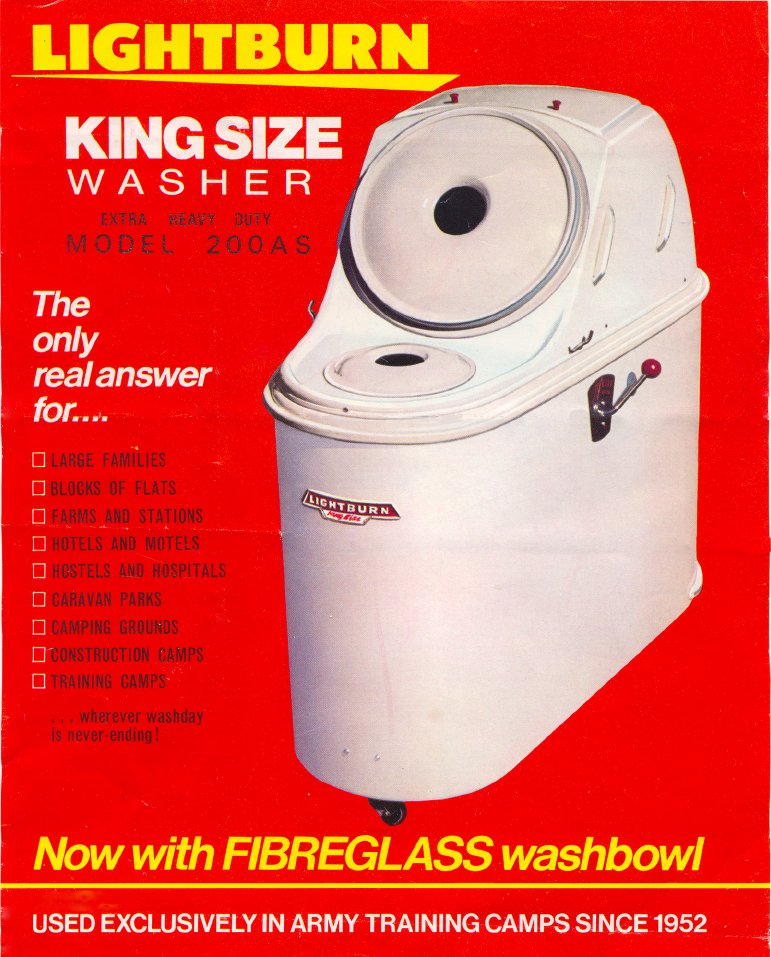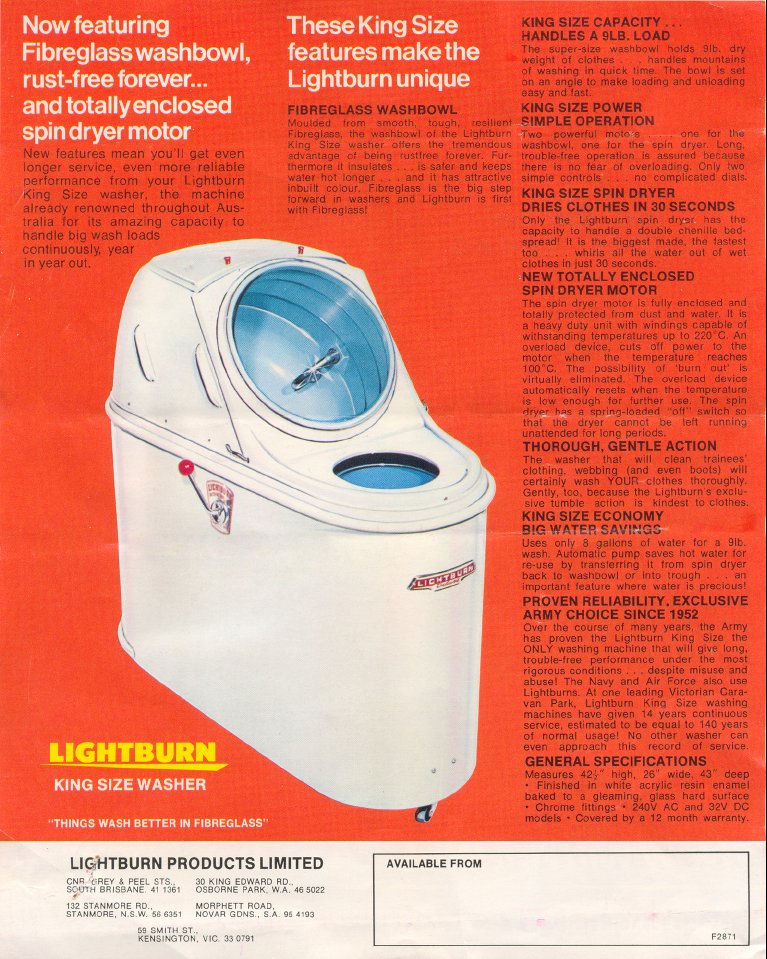|
Thread Number: 3722
Lightburn Brochure |
[Down to Last] |
Post# 90364 10/24/2005 at 01:00 (6,752 days old) by brisnat81  (Brisbane Australia) (Brisbane Australia) |
||
|
Hi Guys, Here is the lightburn brochure I purchased off Ebay. Regards Nathan 
| ||

|
Post# 90365 , Reply# 1 10/24/2005 at 01:02 (6,752 days old) by brisnat81  (Brisbane Australia) (Brisbane Australia) |
||
|
Page 2 The second page 
| ||
Post# 90423 , Reply# 3 10/24/2005 at 09:19 (6,751 days old) by foraloysius  (Leeuwarden, Friesland, the Netherlands) (Leeuwarden, Friesland, the Netherlands) |
||
 | ||
Post# 90429 , Reply# 4 10/24/2005 at 09:35 (6,751 days old) by gizmo  (Victoria, Australia) (Victoria, Australia) |
||
|
This is the machine my Nan had when I was a kid. Tom - rinse in the spinner - manual though, not auto rinse. Louis - Keymatic TT is a good description, also it's like a cross between a twin tub and a cement mixer. Chris | ||
| Post# 90435 , Reply# 6 10/24/2005 at 10:15 (6,751 days old) by lesto (Atlanta) | ||
|
It DOES resemble some sort of hospital device. I was wondering if it was some type of colonic machine. :O | ||
Post# 90441 , Reply# 7 10/24/2005 at 10:39 (6,751 days old) by gansky1  (Omaha, The Home of the TV Dinner!) (Omaha, The Home of the TV Dinner!) |
||
 | ||
Post# 90794 , Reply# 14 10/26/2005 at 09:16 (6,749 days old) by gizmo  (Victoria, Australia) (Victoria, Australia) |
||
|
re: plug in the bottom: I have wondered the same thing myself. It would make more sense to remove the plug at the top but as it was friction drive to the drum, you might end up with a wet drum and no drive. Mr Harold Lightburn was by all accounts a bit of an eccentric, it should be no surprise his machines were a bit eccentric too. Chris. | ||
Post# 90811 , Reply# 15 10/26/2005 at 13:56 (6,749 days old) by brisnat81  (Brisbane Australia) (Brisbane Australia) |
||
|
Plug It specifically states in the service manual, that operation of the drum without the plug in place, will result in slippage. They advise that if normal tumbling isnt occuring, to replace the seals around the plug. | ||

 Comes to the Rescue!
Comes to the Rescue!